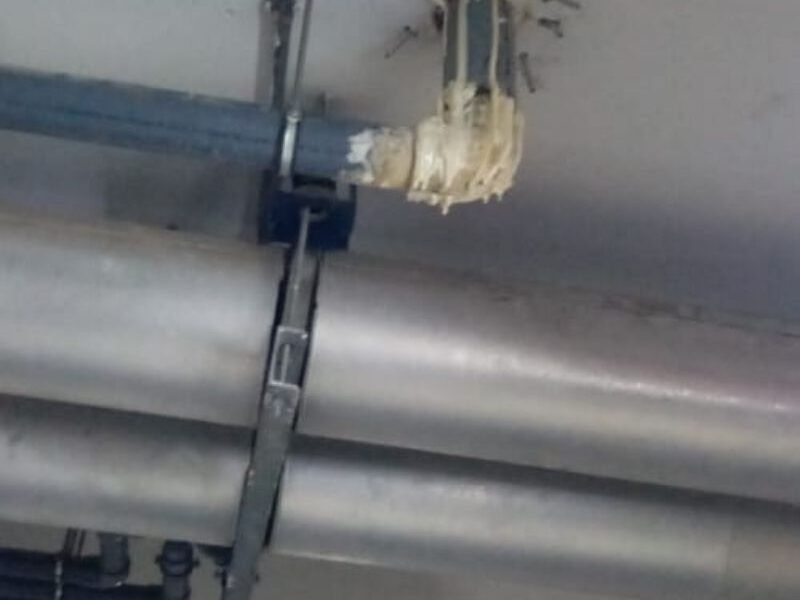Common Problems Solved by Injection Waterproofing
Water damage is one of the most insidious threats to any property, whether it’s a home, office, or industrial building. Even the smallest crack or gap in a structure can lead to significant problems if left unchecked. Luckily, injection waterproofing offers a highly effective and efficient solution for preventing water intrusion and preserving the integrity of your building.
In this blog post, we’ll explore the common problems that injection waterproofing can solve, saving you time, money, and stress in the process.
1. Cracks in Concrete Walls
One of the most common issues homeowners face is cracks in their concrete walls. Over time, these cracks can develop due to settling, temperature changes, or poor construction. Once these cracks form, water can seep through, leading to damp walls, mold growth, and further structural damage.
Injection waterproofing effectively seals these cracks by injecting a waterproofing material like polyurethane or epoxy resins. The injected material expands and fills the crack, creating a long-lasting barrier that prevents water from entering and damaging the structure.
2. Leaking Basements
Basement leaks are a frequent concern for homeowners, especially in areas with high groundwater levels. Basement waterproofing can be costly, and traditional methods like digging up the exterior to apply waterproof membranes are labor-intensive and expensive.
Injection waterproofing offers a more cost-effective alternative. By injecting sealants into the cracks and joints where water is entering, this method prevents water from seeping into your basement, keeping the area dry and mold-free. This approach is fast, efficient, and doesn’t require major disruptions to your living space.
3. Water Seepage in Foundation Walls
Foundation walls are particularly vulnerable to water intrusion. Whether through cracks, gaps in joints, or porous concrete, water seepage can cause long-term damage to a building’s foundation. Over time, this can lead to the weakening of the foundation and even structural failure.
Injection waterproofing can be used to seal any cracks or gaps in the foundation. The injected waterproofing material not only blocks the water but also provides an additional layer of protection that helps maintain the integrity of the foundation. This is crucial for avoiding costly repairs down the road.
4. Leaky Lift Pits
Lift pits, often found in basements or underground parking areas, are prone to water intrusion. Since these areas are generally below ground level, they are susceptible to groundwater infiltration. Without proper waterproofing, this can lead to damage to the lift equipment, creating expensive repairs and safety concerns.
Injection waterproofing provides a targeted solution for lift pits by sealing cracks and joints in the walls and floor. This ensures that water does not interfere with the operation of the lift and prevents corrosion and mold buildup, which could affect the safety and functionality of the equipment.
5. Expansion Joint Leaks
Expansion joints are used in buildings and concrete structures to allow for movement and prevent cracking. However, these joints can also become a source of water leakage, especially when they degrade over time or fail due to external pressures. Water entering through expansion joints can cause damage to floors, walls, and ceilings.
Injection waterproofing helps to seal expansion joints, ensuring that water cannot seep through. By injecting a flexible waterproof material into these joints, the sealant moves with the building and provides an effective barrier against moisture, protecting both the structure and the interior finishes.
6. Cracks in Concrete Slabs
Concrete slabs, particularly those in basements, parking garages, or commercial buildings, can develop cracks over time due to pressure or environmental conditions. Water can seep through these cracks, causing moisture issues, mold, and deterioration of the slab.
With injection waterproofing, these cracks can be sealed efficiently. The injected material fills the cracks, preventing water from entering and minimizing the risk of further damage. This approach is quick, cost-effective, and prevents the need for costly slab replacements.
7. Water Leaks in Tunnels and Underground Structures
Tunnels and underground structures are inherently at risk for water infiltration due to their location below ground. Water pressure can force its way through cracks in tunnel walls and floors, leading to leaks and potential flooding.
Injection waterproofing is ideal for sealing these leaks. It can be applied to the cracks and joints in tunnel walls, ensuring that water doesn’t infiltrate the structure. This helps to prevent flooding, mold growth, and water damage, ensuring that the tunnel or underground space remains safe and dry.
8. Damp Walls and Mold Issues
Damp walls and the resulting mold growth are a common problem caused by water seepage. Mold can cause serious health issues, especially for individuals with respiratory problems. Dampness also weakens the building structure and deteriorates materials like wood, drywall, and insulation.
Injection waterproofing prevents water from entering the walls, stopping the cycle of moisture buildup and mold growth. By sealing cracks and gaps with a waterproof injection, you’re not only protecting your building but also improving the health and comfort of its occupants.
Conclusion
Injection waterproofing is a highly effective solution for addressing a range of water-related problems in homes and buildings. Whether you’re dealing with cracks in the concrete, basement leaks, expansion joint failures, or water seepage in your foundation, this method offers a fast, efficient, and cost-effective way to prevent further damage and preserve the integrity of your property.
If you’re facing any of these common issues, it’s time to consider injection waterproofing as your go-to solution. Professional waterproofing contractors can assess your property, identify problem areas, and apply the right treatment to keep your home or building dry and protected for years to come.

